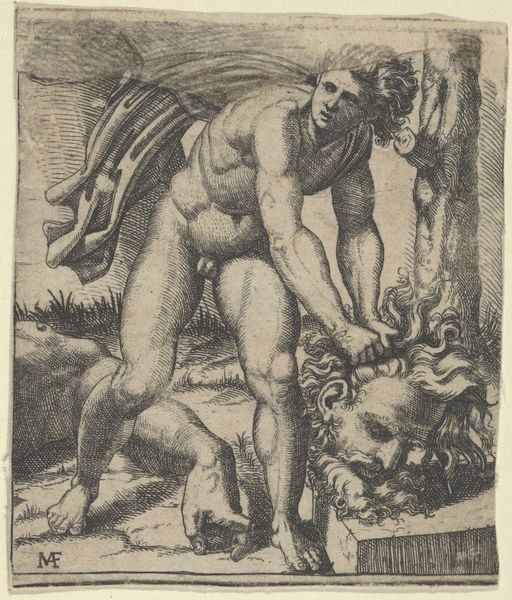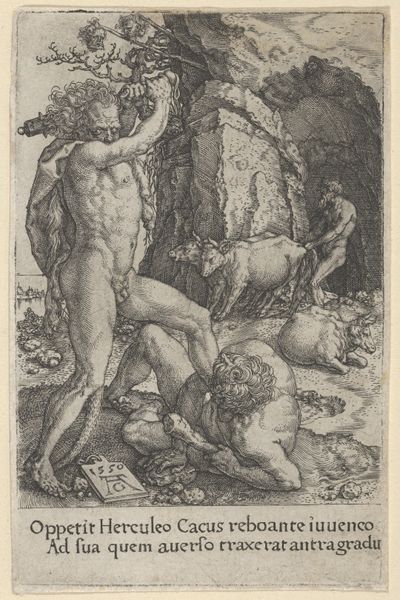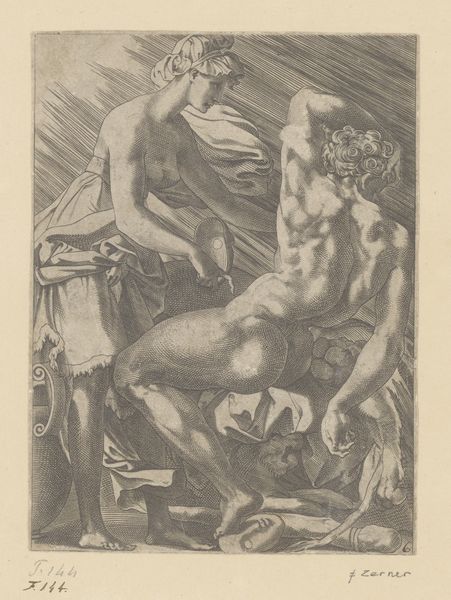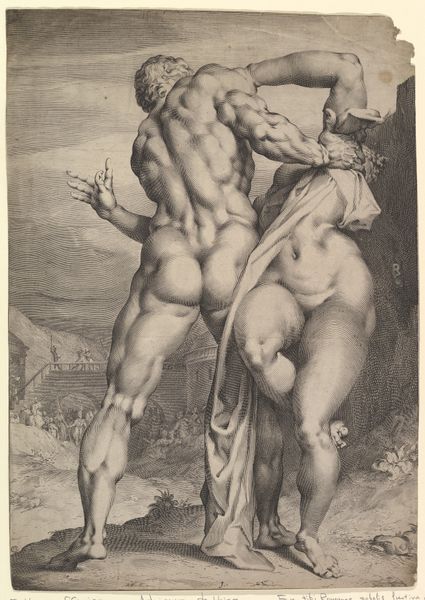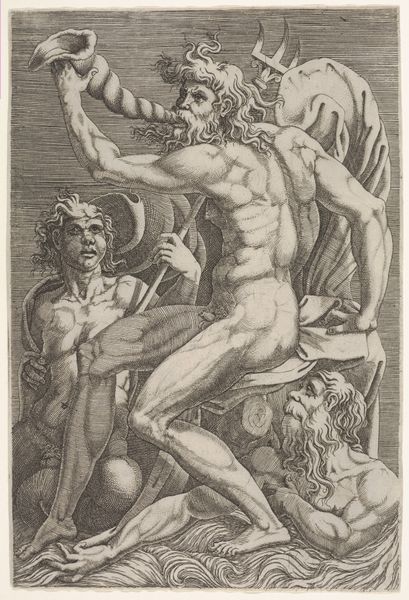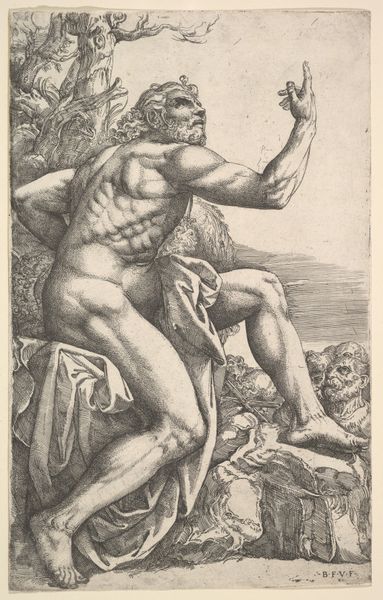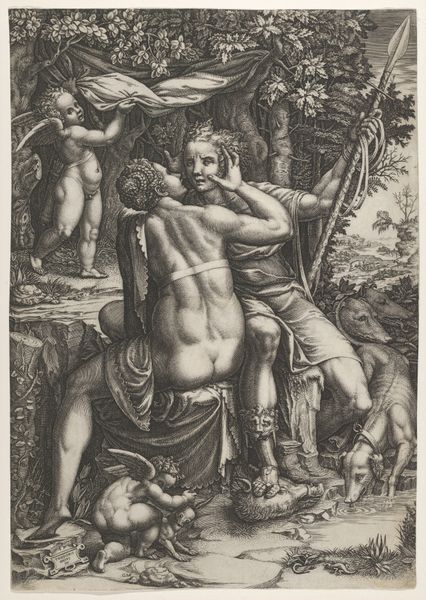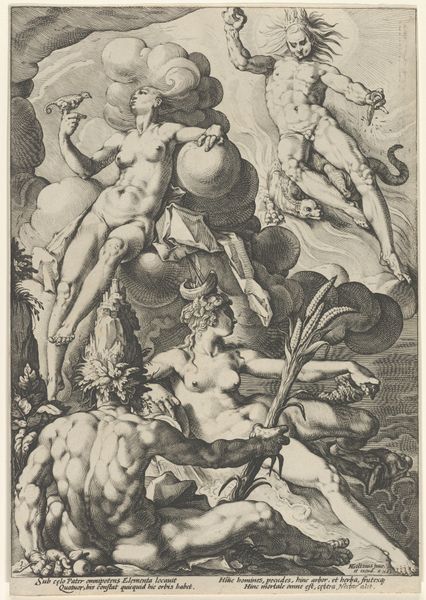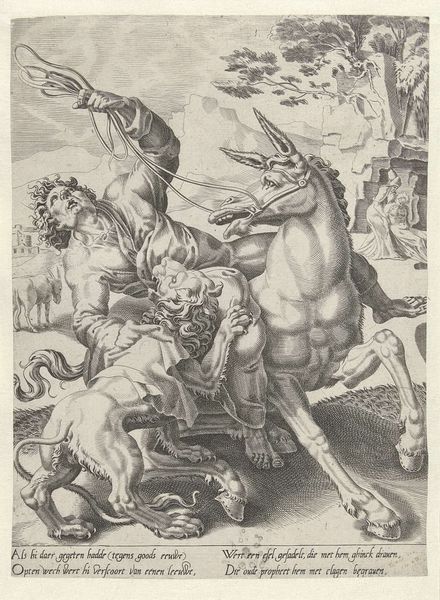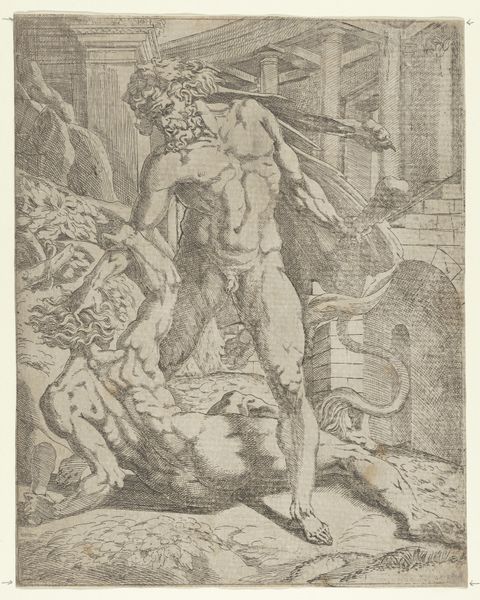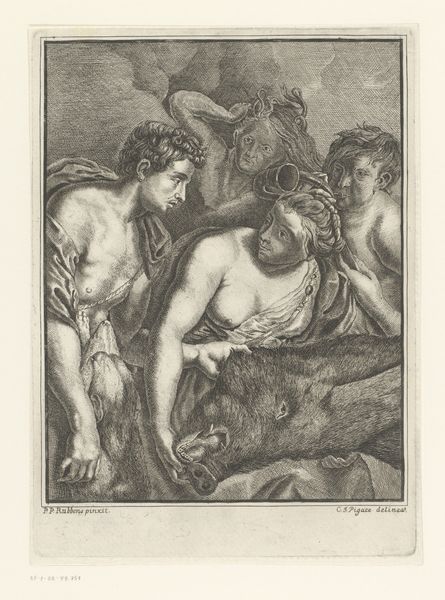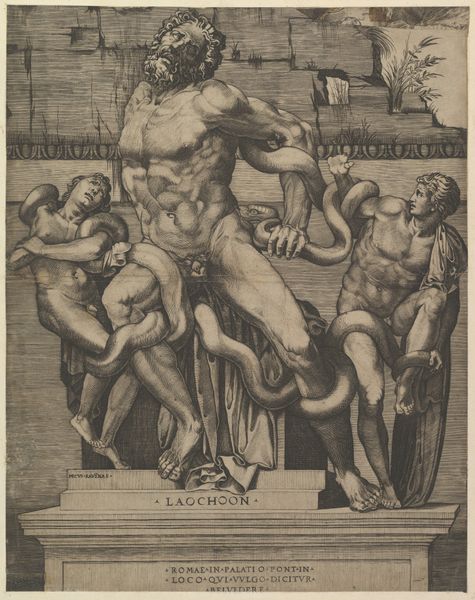
Dimensions: height 239 mm, width 167 mm
Copyright: Rijks Museum: Open Domain
Editor: So, here we have "Bacchus and Two Satyrs" an engraving by René Boyvin, made sometime between 1535 and 1598. It has this, well, bacchanalian feel to it – a trio of figures in various states of undress, grapes everywhere… How do you interpret this work? Curator: I see a powerful representation of patriarchal excess, one that really exemplifies the Mannerist aesthetic. Let’s consider the positioning of Bacchus. Note his central placement and muscularity, he's almost a focal point, wouldn't you agree? How does this idealized form relate to historical power dynamics and representations of masculinity? Editor: That’s interesting. I guess I was focusing on the more superficial aspects – the revelry, the abundance of grapes. But I see what you mean; he is centered and seems like the figurehead, despite the somewhat chaotic composition. Curator: Exactly. Boyvin is pulling from classical mythology, yet he is very deliberately framing a version of power. Look at how the satyrs physically support and surround him. Think about the era: How does this imagery reinforce social and political hierarchies of the time? What role does intoxication, presented so prominently, play in excusing the behavior of those in positions of dominance? Editor: I didn’t think about the power dynamic that way, I was thinking of the grapes and goat as decoration and symbols of that era... I see it now. Curator: It’s important to question these images. Are we simply admiring artistic skill or critically examining the underlying ideology it presents? By analyzing representations of power like this, we can challenge contemporary structures that echo similar inequalities. Editor: This has given me a completely new perspective. I will look at artworks with questions of power in mind moving forward. Curator: Wonderful. It is vital to approach historical artwork not just as artifacts of the past, but as active participants in ongoing dialogues about society, identity, and politics.
Comments
No comments
Be the first to comment and join the conversation on the ultimate creative platform.
